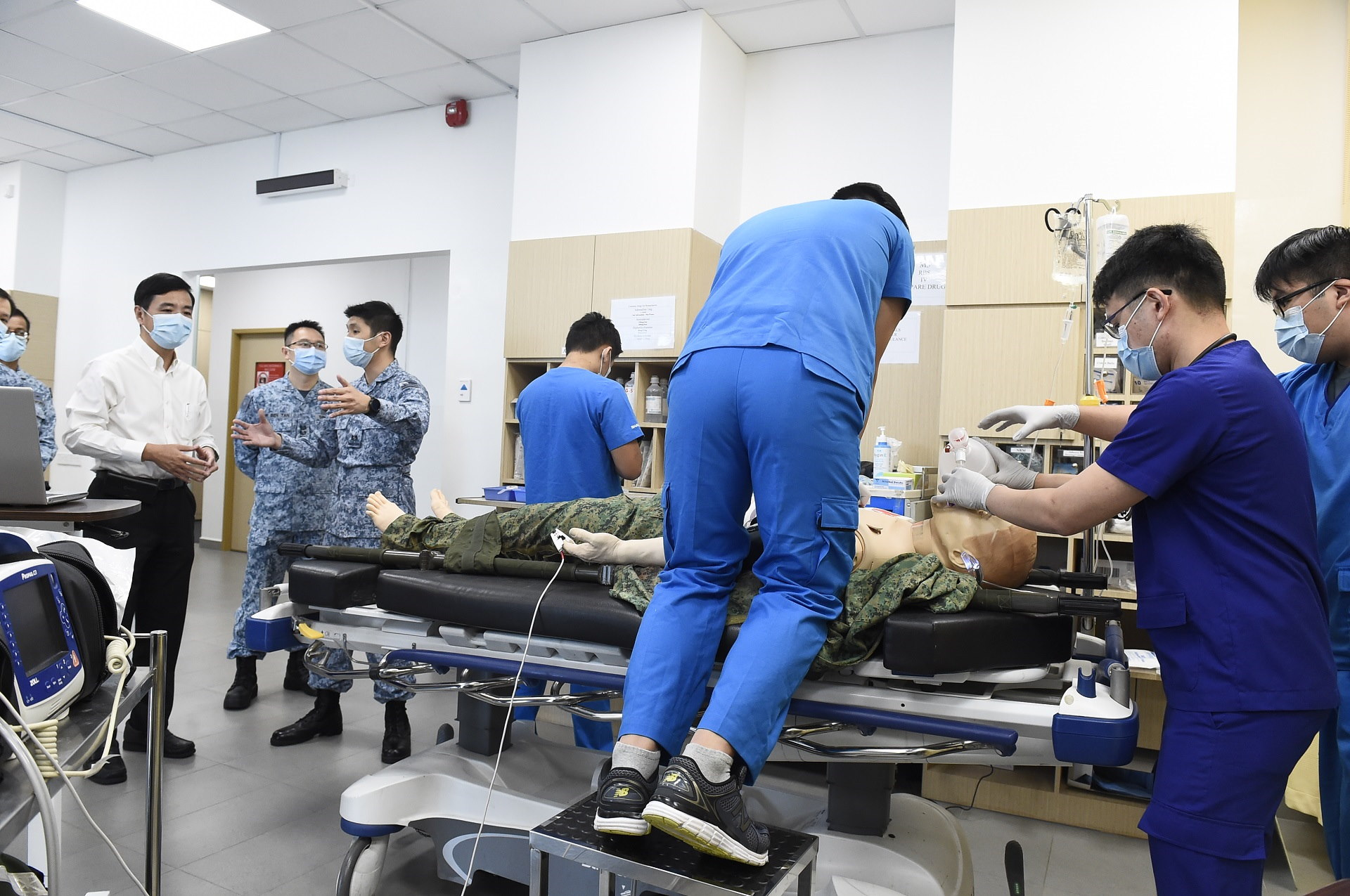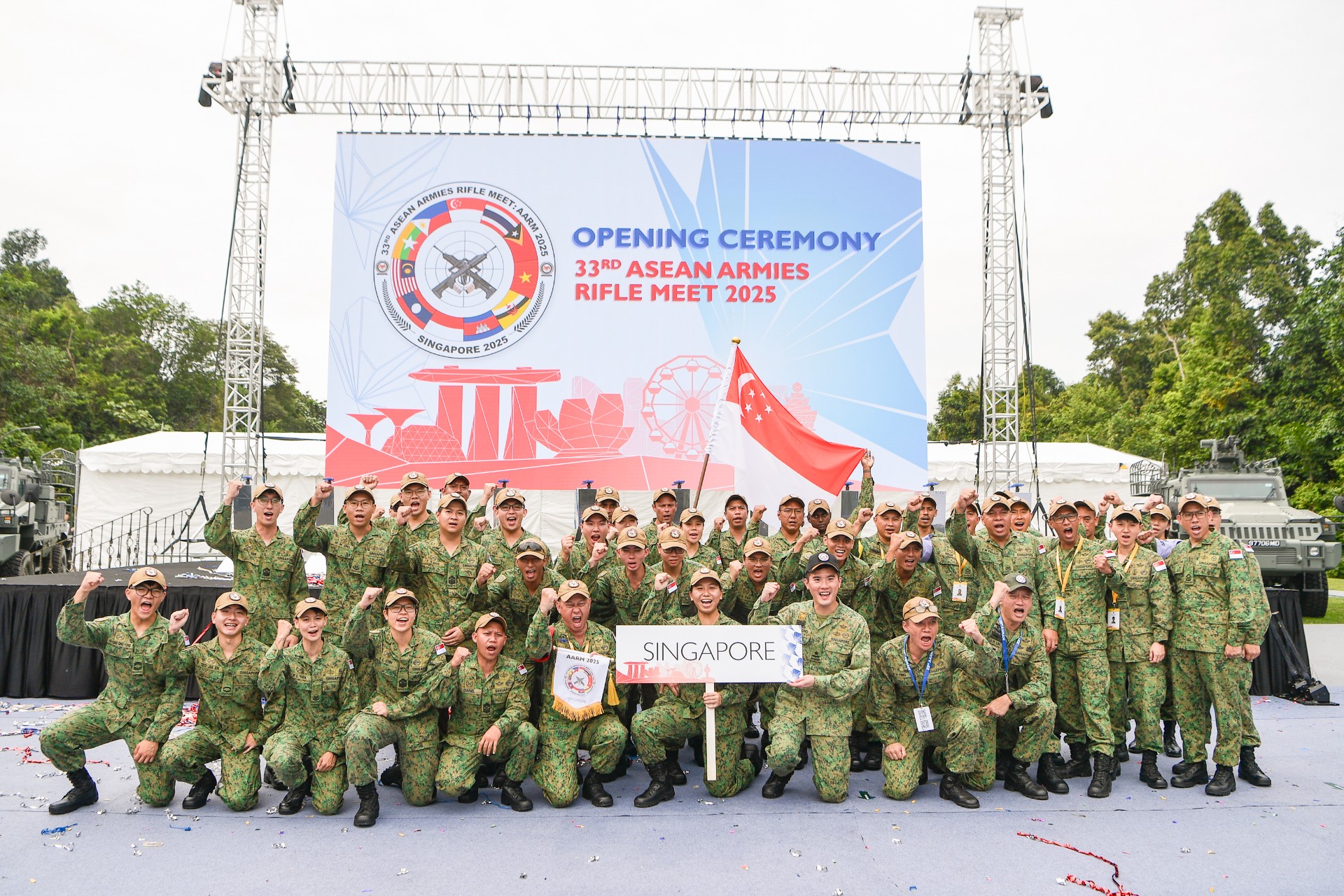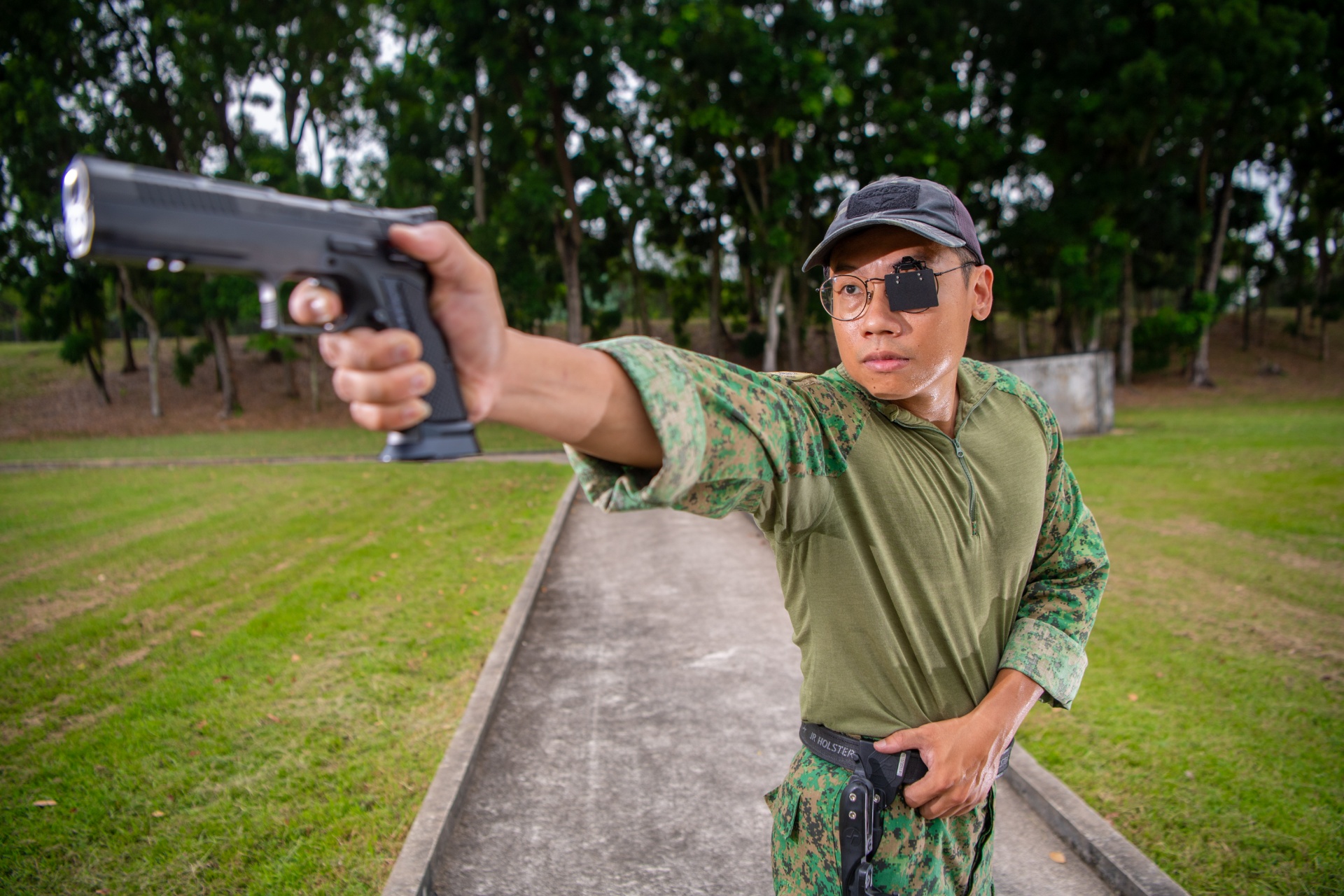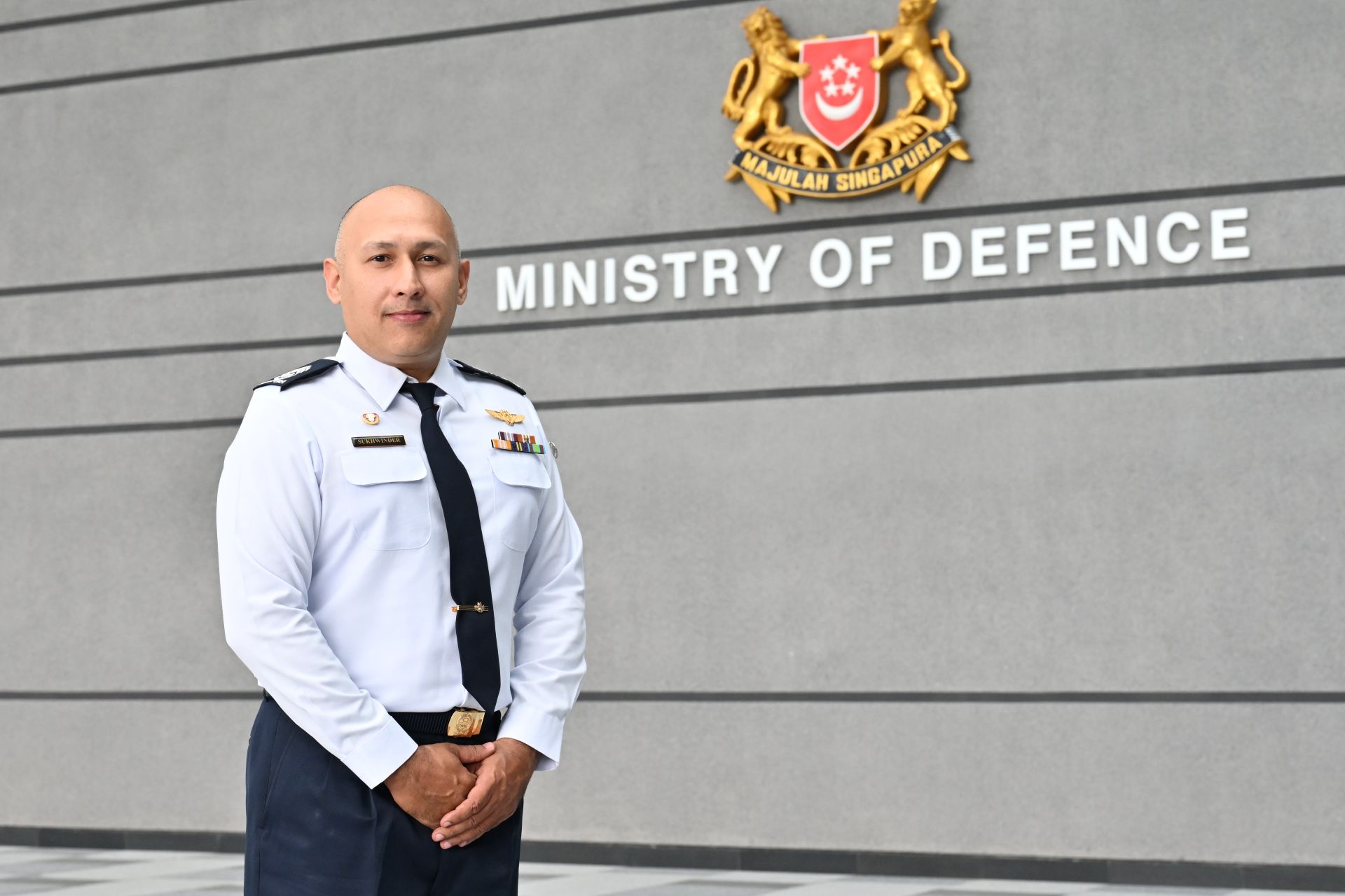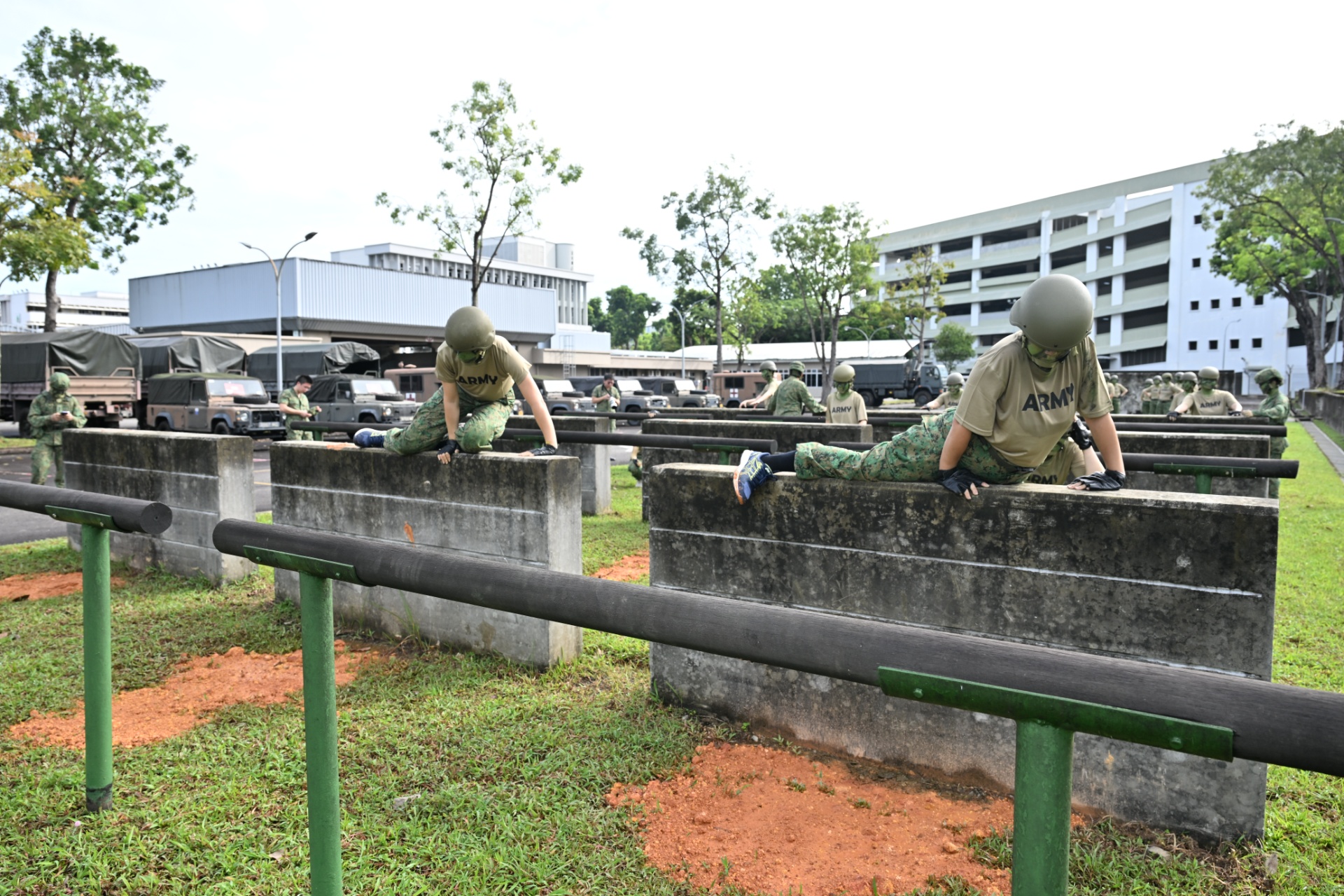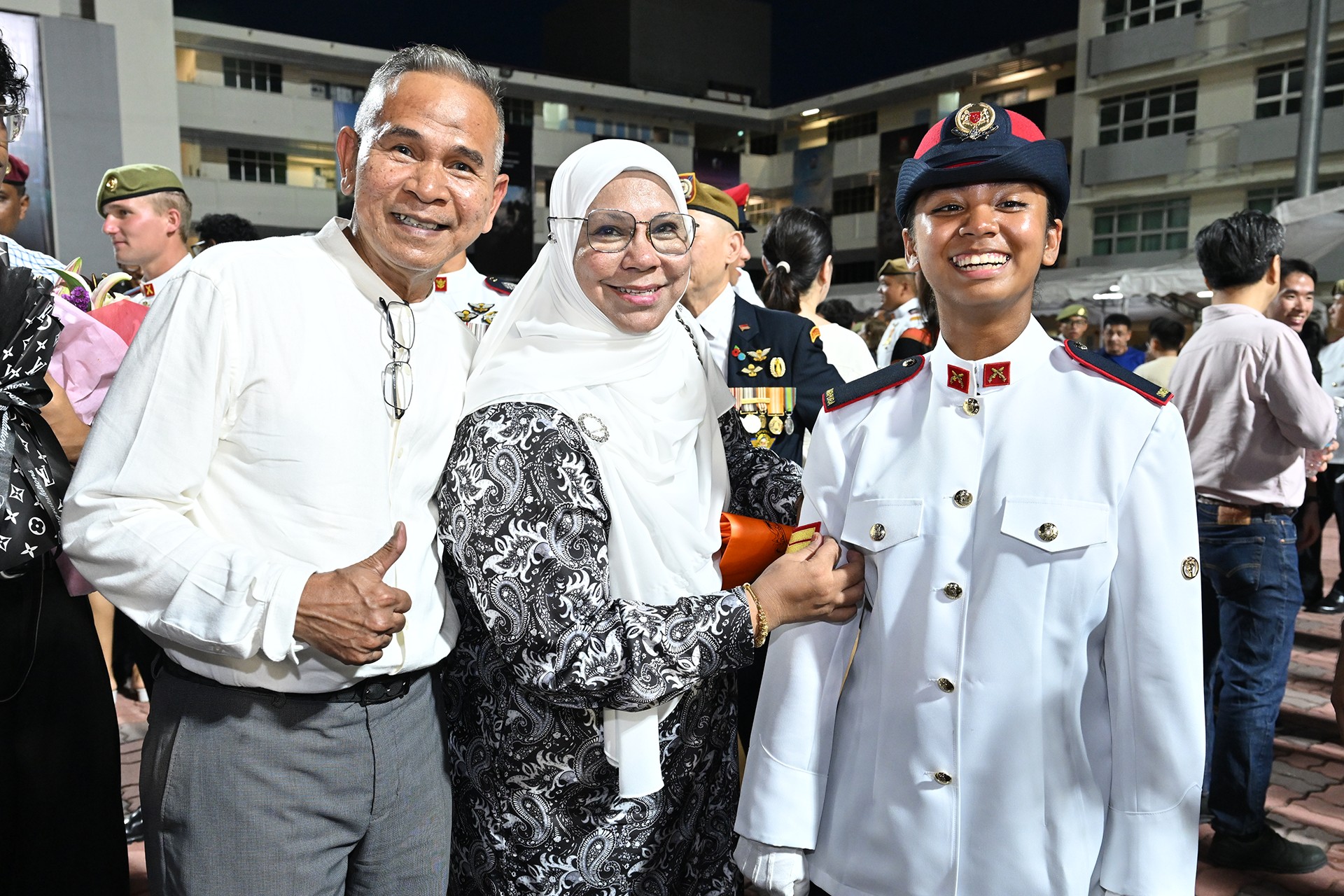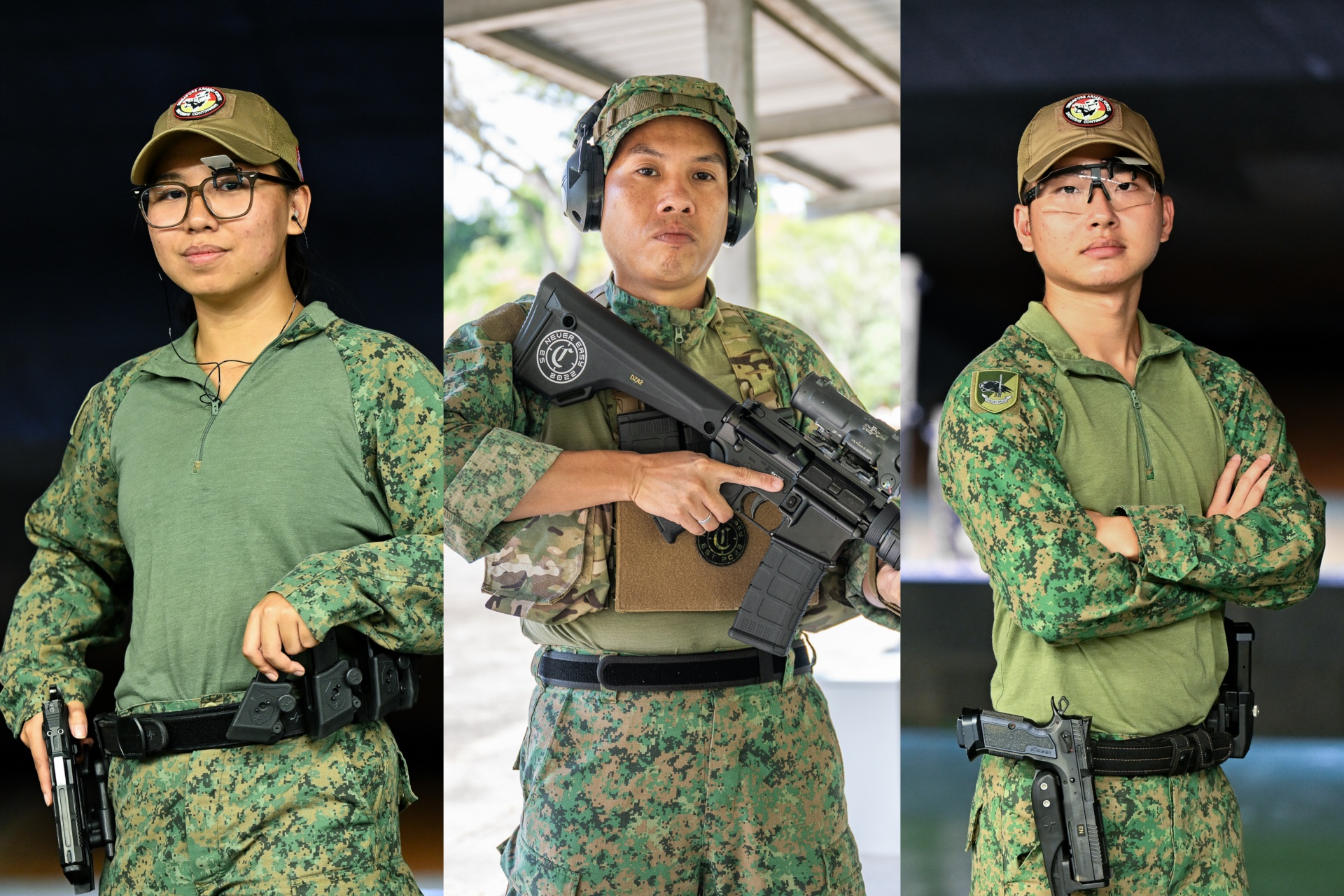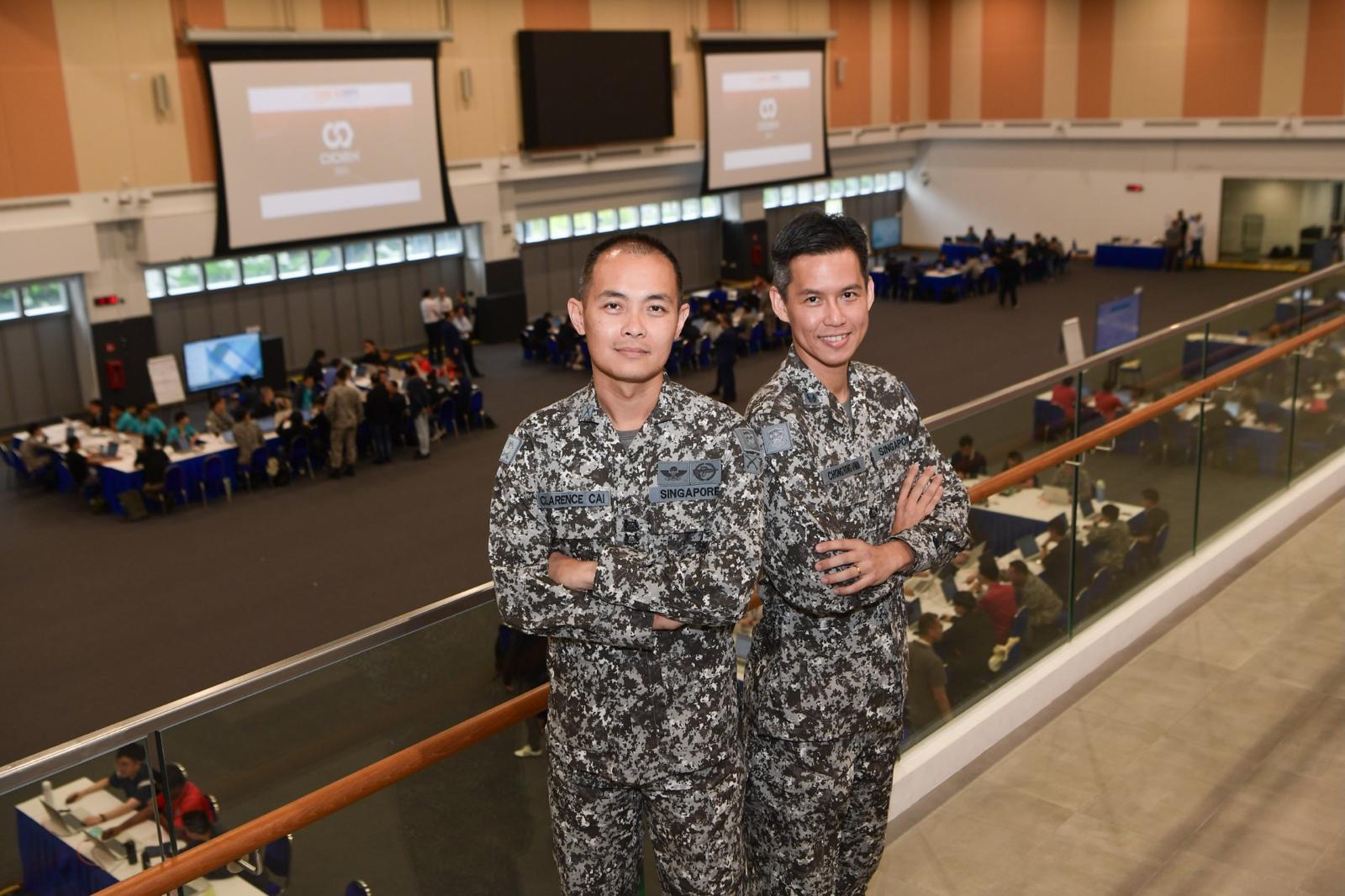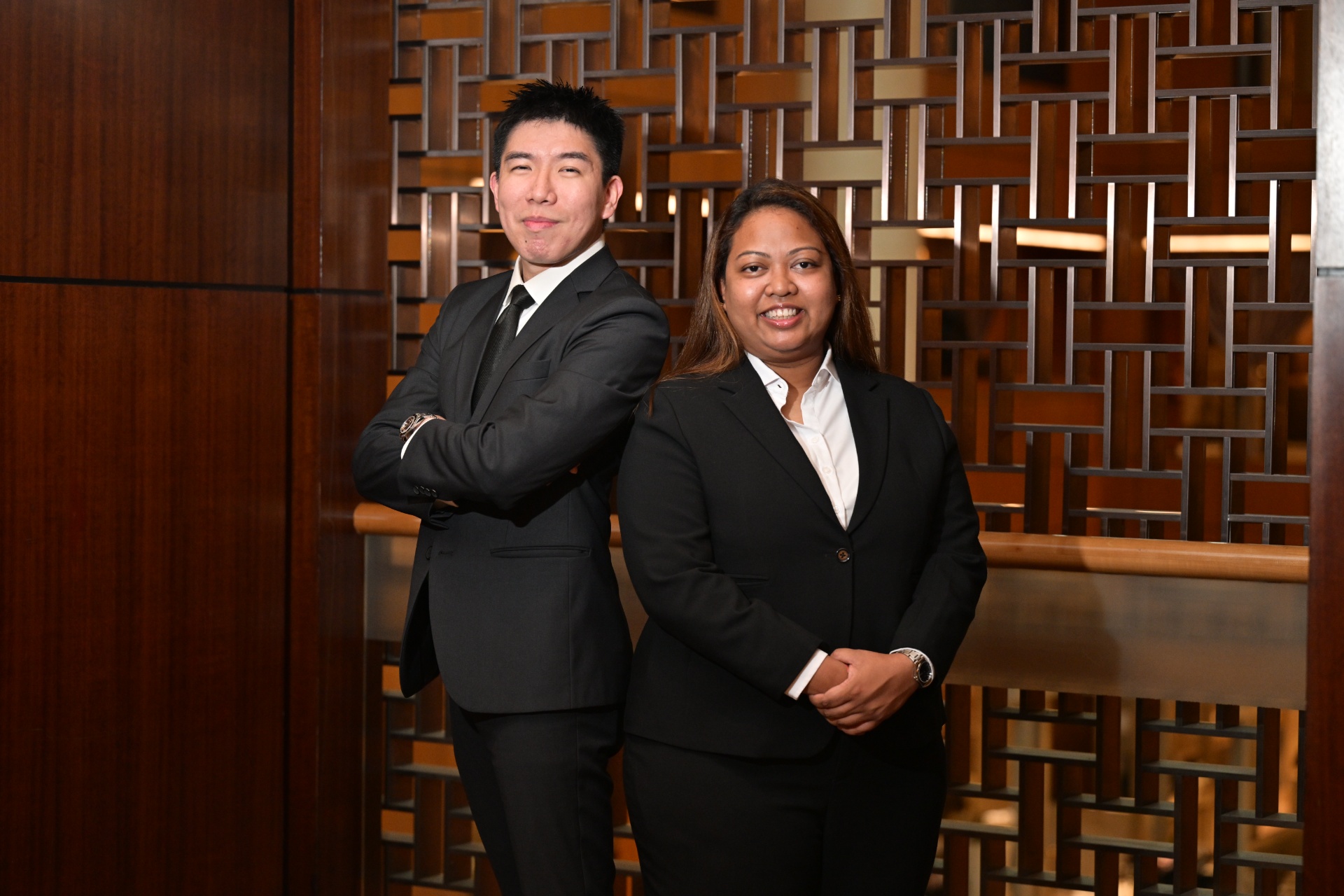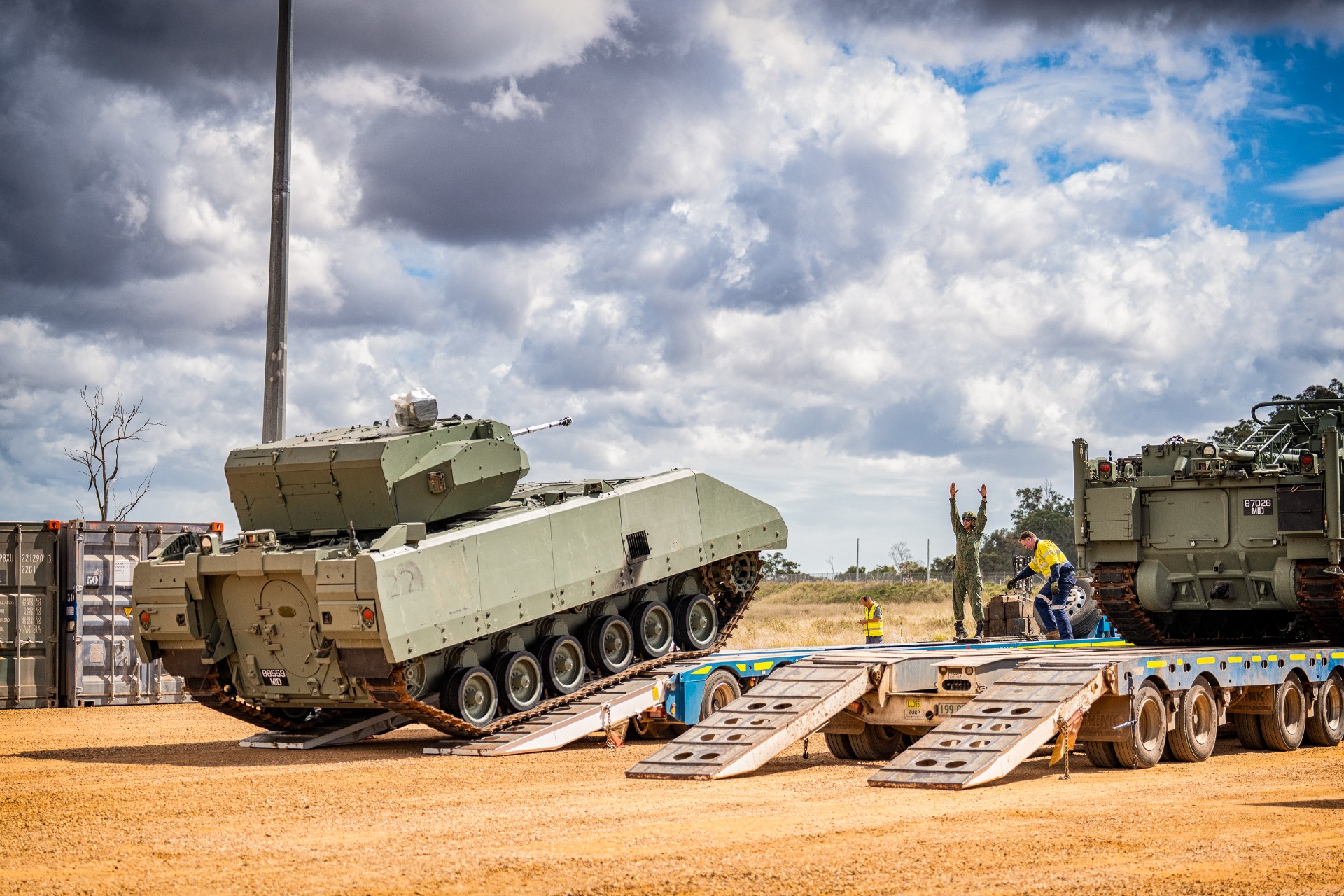PREPARED FOR PANDEMICS
It's the first next-generation medical centre that is designed to handle pandemic outbreaks.It was conceived to be a pandemic-ready medical centre, building on past experience handling global pandemics such as SARS and H1N1. This was back in 2015.
When COVID-19 hit our shores early this year, the next-generation Republic of Singapore Air Force (RSAF) medical centre at Tengah Air Base (TAB) became a timely avenue to test out the pandemic-specific facilities and features.
As the first of its kind, the Tengah Air Base Medical Centre (TAB MC) paved the way for new technological measures and pandemic-ready features to be adopted in other medical centres in time to come.
"We believe in starting small, acting fast, and then thinking big. Once the trials are successful, we will be scaling this up across the other medical centres," said Chief Air Force Medical Officer Colonel (COL) (Dr) Benjamin Tan, 42.
At TAB MC's opening ceremony on 4 Nov, Senior Minister of State for Defence Heng Chee How highlighted the importance of the medical services in force preservation and reducing the downtime required for soldiers to recover. The was made more evident by the current pandemic situation.
"COVID-19 is a dreadful disease that can strike at any moment. And if we do not have the means to control and manage it, it can very quickly degrade the fighting capacity of the SAF (Singapore Armed Forces)" Mr Heng said.
"Because of the way it (TAB MC) is designed and equipped and the personnel are trained, it greatly enhances our confidence and our ability to take good care of our personnel. This in turn enables our personnel to discharge their core capability to defend Singapore for Singaporeans."
Here's what you need to know about the TAB MC:
Safer, quicker, more efficient swabbing
Two sheltered outdoor areas provide safe and well-ventilated spaces for swabs to be conducted. The first was a sheltered driveway, where drive-through swabs can be conducted for personnel entering the air base.
With the personnel remaining in the confines of their vehicles throughout the process, exposure to other people, especially medical centre visitors, would be minimised, thereby reducing the risk of transmission.
The second was a sheltered foyer with an outdoor swab booth, where walk-in swabs can be conducted with minimal contamination to other medical centre visitors. Patients with less severe respiratory infection symptoms would be triaged and swabbed here.
The booth also reduced the use of Personal Protective Equipment (PPE) by personnel conducting the swabs. Planned natural ventilation created a safe space for patients to engage with medical personnel.
To manage these swabs, TAB MC used a newly-developed digital identity verification and labelling mobile app that digitalises the administration process. This helped to reduce human error and increase efficiency.
The app was developed by the RSAF's innovation office in conjunction with Air Force Medical Service and Headquarters Air Power Generation Command. It was deployed in October and will be on trial for the next six months.
Specially designed isolation rooms
For patients with acute respiratory infection (ARI) symptoms, swabs would be carried out in specially built isolation rooms as they waited for an ambulance to convey them to a hospital. These rooms are located on the second level, accessible via a route that bypasses uncontaminated zones.
They have a separate ventilation system that regulates airflow and prevents contaminated air from flowing back to the rest of the medical centre.
In the event of a pandemic outbreak like the spread of COVID-19, infected personnel can be contained and treated while minimising exposure of the virus to other people in the building, allowing the medical centre to continue serving other visitors.
"With this clear segregation built into the design of the building, it is very efficient and effective in operating in a COVID-19 environment. It gives great assurance to the servicemen coming to the medical centre," said COL (Dr) Tan.
Keeping patients and visitors safe
To keep visitors to the medical centre safe and reduce exposure to patients with ARI symptoms, an outward-facing dispensary has been built at the sheltered outdoor foyer. This allowed patients with ARI symptoms to collect their medication without entering the medical centre.
The waiting area inside the medical centre has also been designed to allow for more flexibility in configuration. For example, the large space meant that visitors would be able to observe safe distancing while waiting for their turn. Long benches, a common sight in clinics and medical centres, have also been replaced by individual chairs that can be moved to observe safe distancing measures.
More efficient medical care with technology
The medical centre is currently carrying out trials on mobile apps and technological capabilities to allow personnel to seek medical attention via tele-consultation. Some of these technological capabilities include:
- Using Remote Photo-plethysmography (RPPG) to measure vital signs. The app is able to measure a patient’s vital signs, such as heart rate, respiration rate and oxygen saturation, by recording a series of pictures of his face. The patient simply has to keep the camera on his face for a few minutes for the stats to be measured.
- A smart locker medication dispensing system that allows personnel to collect prescribed medication at their convenience. This initiative benefits service personnel who work shifts and may not be able to visit the dispensary during regular opening hours.
- Making a doctor's appointment and receiving consultation from a medical officer remotely via teleconsultation. The RSAF's mobile healthcare app for tele-consultation (co-developed by Air Force Medical Services, Headquarters Air Power Generation Command and SWiFT Office) is currently trialing tele-consultation for national servicemen undergoing Operationally Ready Date Fitness For Instruction medical reviews to allow them to receive their results without having to go to the medical centre.
In future, patients can consult with a medical officer remotely by providing their symptoms for the medical officer's review. Should a more detailed physical consultation be required, the patients will then be asked to visit the medical centre in person.
The app is also looking to incorporate digital queue management system for personnel who have reported sick and wish to see a medical officer.
- The mobile app for air base logistics and medical support, an integrated app that serves a variety of functions within TAB. On the medical front, it has a first-responder function. A personnel calling for help in a medical emergency will be able to pin his exact location so that the ambulance can locate him accurately and expediently.
The use of tele-medicine is a welcomed enhancement for Operationally Ready National Servicemen (NSmen) like Captain (CPT) (NS) Keval Singh Mann: "As an air traffic controller, there are times when after reporting sick, we have to see a doctor before resuming our controlling duties. If we are able to do this via tele-consultation, it will be good for the unit and for us. Not having to queue and wait means that we can better utilise our time."
As a former RSAF regular who had spent nine years at TAB, the 33-year-old Air Warfare Officer also noted that the new safety processes at the medical centre, such as providing visitors with surgical masks and requiring them to submit a health declaration, gave NSmen like himself and their employers that the SAF was taking good care of their well-being during In-Camp Training.
To prepare the medical personnel to operate in the new medical centre, the medics spent about a month training and orientating themselves to the new layout, said Senior Medic Military Expert (ME) 3 Lynn Lem.
For example, medics working in the resuscitation room had to orientate themselves to the bigger space and placement of medical equipment, so that they would be able to treat trauma patients effectively.
The learning curve was steep, but ME3 Lem, who has been in the service for almost two decades, embraced the learning process. "Sometimes you get used to the old processes, and you'll be a bit cautious when using new technology. But things have changed; if we don't improve and pick up new technologies, we will be left behind", said the 43-year-old.
"I've learnt a lot from my medics, especially the younger generation, who are very savvy with the apps. These innovations and faster technologies, they help the servicemen and medics, and are good for the medical centre."
